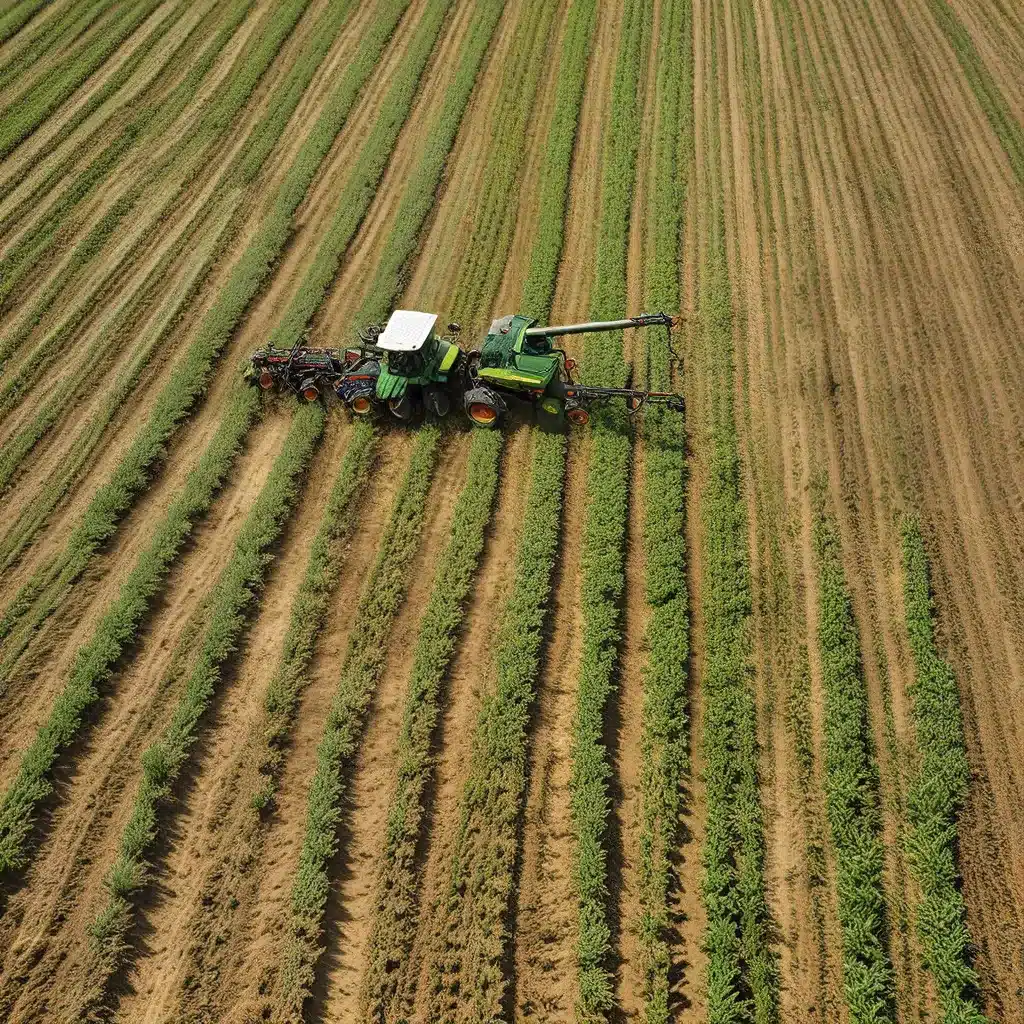
In the dynamic and ever-evolving world of agriculture, the integration of sensor networks and the Internet of Things (IoT) has revolutionized the way we approach crop cultivation and resource management. Precision agriculture, powered by sensor-driven data collection and analysis, has emerged as a game-changer, offering farmers and agronomists unprecedented insights and opportunities to enhance productivity, sustainability, and profitability.
The Rise of Sensor-Enabled Precision Agriculture
At the heart of this transformation lies the sensor network, a collection of interconnected devices that gather and transmit valuable data from the field. These sensors, strategically placed throughout the agricultural landscape, monitor a wide range of environmental factors, including soil moisture, temperature, nutrient levels, and even plant health. By continuously collecting and analyzing this data, farmers can make informed decisions, optimize resource allocation, and respond to emerging challenges with greater precision and efficiency.
One of the key advantages of sensor-enabled precision agriculture is its ability to precisely target the specific needs of individual crops or even individual plants within a field. Rather than relying on broad, one-size-fits-all approaches, farmers can now tailor their irrigation, fertilization, and pest management strategies to the unique requirements of each plant or zone, leading to enhanced crop yields and reduced resource consumption.
Unlocking the Potential of IoT in Agriculture
The integration of IoT technologies further amplifies the impact of sensor networks in precision agriculture. By connecting these sensors to cloud-based platforms and data analytics tools, farmers can access real-time insights, historical trends, and predictive models that inform their decision-making processes.
Sensor-Networks.org, for example, offers a comprehensive suite of IoT-powered solutions for precision agriculture, enabling growers to monitor soil conditions, track environmental variables, and optimize resource allocation based on their specific needs and objectives.
Through the seamless integration of sensors, data analytics, and cloud-based platforms, precision agriculture empowers farmers to:
- Optimize Irrigation: By monitoring soil moisture levels and weather patterns, farmers can precisely time and target their irrigation efforts, reducing water consumption while maximizing crop yields.
- Enhance Nutrient Management: Sensor data on soil composition and plant health can guide the targeted application of fertilizers, ensuring that each plant receives the right nutrients at the right time, minimizing waste and environmental impact.
- Detect and Respond to Pests and Diseases: Early detection of pest infestations or disease outbreaks allows farmers to intervene promptly and apply precise, targeted treatments, rather than relying on broad, preventative measures.
- Improve Harvesting Efficiency: Sensors can track crop maturity, ripeness, and yield estimates, enabling farmers to time their harvests more accurately and minimize wastage.
Ensuring Secure and Resilient Sensor Networks
As the adoption of sensor networks and IoT technologies in agriculture continues to grow, the importance of robust security measures becomes increasingly paramount. Cybersecurity threats, such as data breaches, system hacks, and malicious interference, pose significant risks to the integrity and reliability of precision agriculture systems.
To address these concerns, industry leaders and researchers are developing advanced security protocols and encryption techniques to safeguard sensor networks and IoT platforms. Strategies like end-to-end encryption, secure data storage, and tamper-resistant hardware help to protect sensitive agricultural data and ensure the resilience of these critical systems.
Optimizing Energy Efficiency in Sensor Networks
Another crucial aspect of sensor-enabled precision agriculture is the optimization of energy consumption. Sensor networks, by their very nature, require a reliable and efficient power supply to operate effectively in remote, often off-grid, agricultural settings.
Innovative approaches, such as solar-powered sensors, energy-harvesting technologies, and low-power communication protocols, are being explored to minimize the energy footprint of these systems and ensure their long-term sustainability. By employing these energy-efficient strategies, farmers can reduce their operational costs and contribute to the overall environmental stewardship of their operations.
The Future of Sensor-Enabled Precision Agriculture
As the world faces the challenges of population growth, climate change, and resource scarcity, the role of sensor-enabled precision agriculture becomes increasingly critical. By harnessing the power of sensor networks, IoT, and advanced data analytics, farmers and agronomists can optimize crop yields, conserve natural resources, and enhance the sustainability of agricultural practices.
Emerging research in this field suggests that the future of precision agriculture will involve even deeper integration of sensor technologies, autonomous systems, and machine learning algorithms to create truly smart, self-adjusting agricultural ecosystems.
As we continue to explore the vast potential of sensor-enabled precision agriculture, the commitment to innovation, sustainability, and data-driven decision-making will be the keys to unlocking a future of abundant, resilient, and environmentally responsible food production.